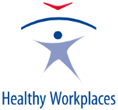Remote and hybrid work
is when an employee works away from the employer’s premises, including from home, by using digital technologies such as personal computers, smartphones, laptops, software packages and the Internet. When remote work is combined with working from the employer’s premises, it is referred to as hybrid work.
While remote workers benefit from a more autonomous and flexible working schedule, it can be the source of some challenges. Firstly, psychosocial risks (resulting from social isolation, work intensification, irregular working hours and an imbalance between personal life and work life) can lead to stress and mental illness. Secondly, prolonged sitting raises the physical risk of musculoskeletal disorders, such as low back pain.
Even though it is not easy for employers to carry out traditional health and safety risk assessments at a worker’s home, risk assessments are more necessary than ever. As such, it is important to increase our knowledge about remote work-related OSH practices and practical tools.
Find out more about the risk factors associated with remote and hybrid work and how to prevent or minimise them.

